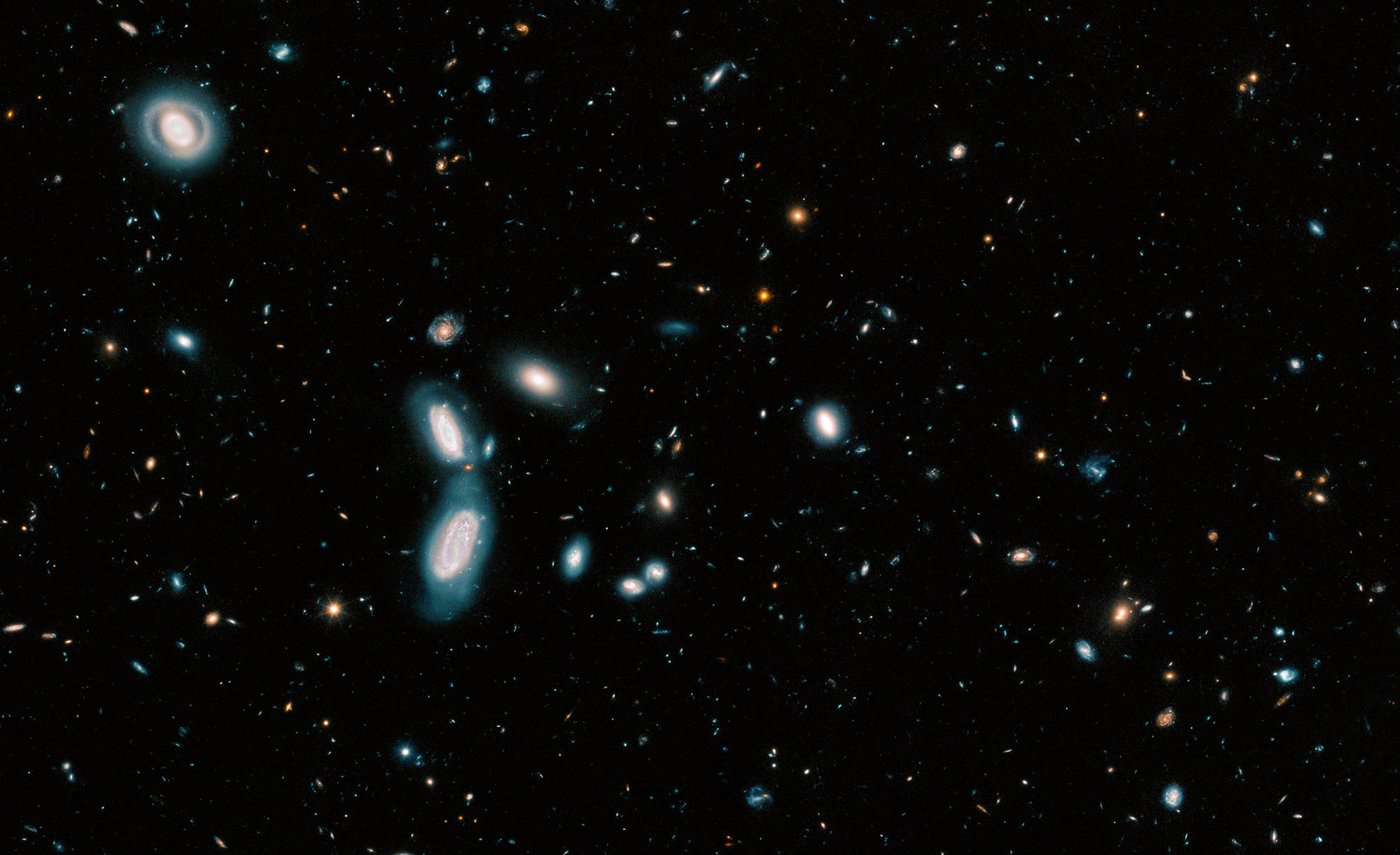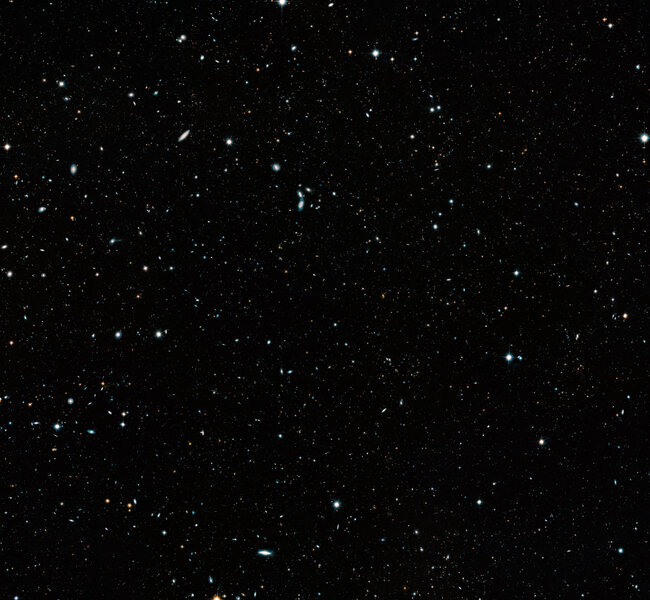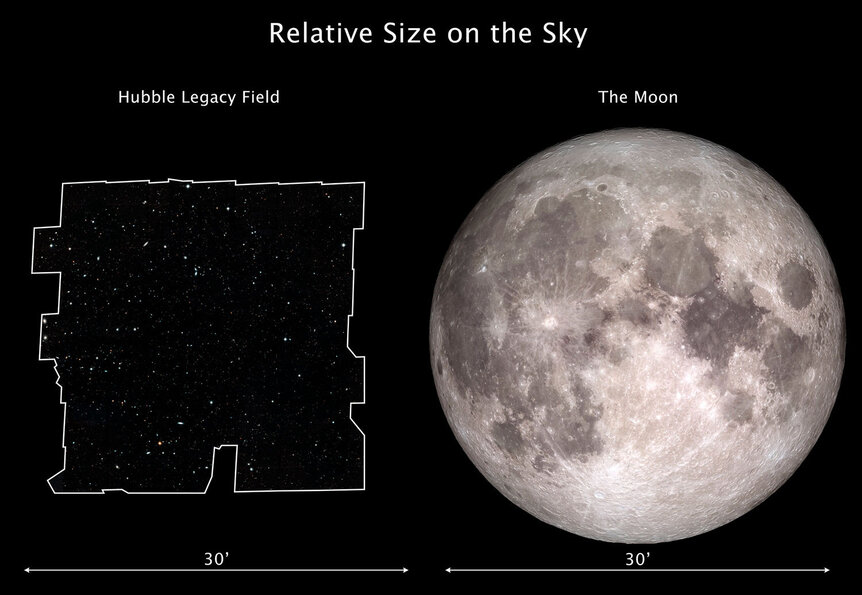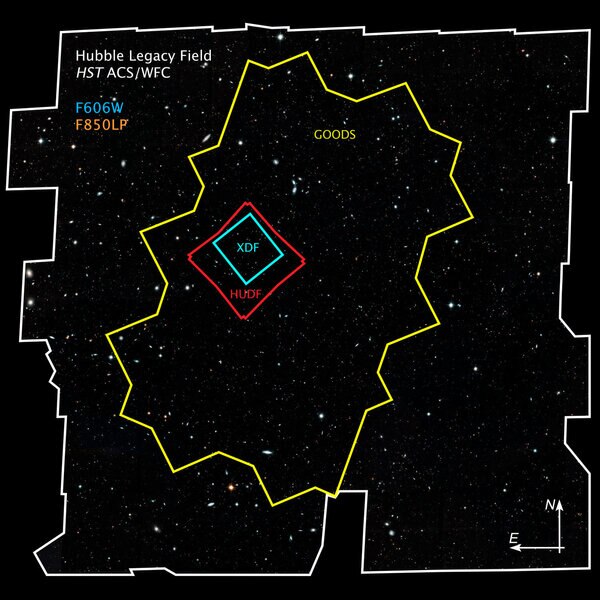Create a free profile to get unlimited access to exclusive videos, sweepstakes, and more!
The Legacy of Hubble: One image, a quarter MILLION galaxies

Over the years, the Hubble Space Telescope has astonished us over and again. It has shown us planets, moons, star clusters, nebulae, galaxies… so many spectacular, gorgeous and scientifically rich images that astronomers will investigate them for decades to come.
Of all the kinds of observations it's taken, one of the most profound is also one of the most subtle. It hangs on a simple idea: What if we point this powerful observatory at one small spot in space, someplace that appears relatively empty, and let it just accumulate light for hours, days, weeks? What will we see?
The image created from this idea was the Hubble Deep Field, an iconic shot that contained thousands of galaxies. It was followed up with the Hubble Ultra Deep Field, which took a longer exposure and probed more deeply into the Universe. That was followed in turn by the Hubble eXtreme Deep Field, an observation that totals over one million seconds.
So how do you follow up on that? Well, all these images are of a relatively small area of the sky; you could easily block them with the tip of a pencil held at arm's length. The obvious next step is to widen the view, and map a larger section of the sky. A much, much wider section.
And that, my friends, is why we now have this: The incredible Hubble Legacy Field, which is, quite simply, jaw-dropping.
Ye. GADS.
It's filled with galaxies! The vast majority of objects you see here are galaxies; only a handful are stars in our own galaxy*. To set the stage: We are inside the Milky Way galaxy, which is filled with stars. We can see past those into intergalactic space, like being inside a house and looking out the window to houses beyond. In that case, the stars in the image are like dust specks on the window; you can see things far, far beyond.
The galaxies in this image are very far indeed. I'd guess that most are at least a billion light years away, and some are up to 13.3 billion light years distant: So far away that we see them as they were not long after the first stars formed in them after the Big Bang!
Literally, the light from them had been traveling for over 13 billion years, 96% the age of the Universe, before finishing their journey at Hubble's mirror.
Mind you, some of those smaller, point-like galaxies may actually be closer to us and physically small, or they may be monsters seen from across the Universe. It's difficult to distinguish this from just looking at the image. There are ways to discern the two; for example examining the colors of the galaxies can reveal if they are small and close or big and far away. Taking spectra (breaking their light up into thousands of individual colors) can reveal their distance directly, too. Astronomers will be doing precisely this to the galaxies seen here, so that they can be studied better.
The image displayed here is only 2,000 pixels wide, I had to shrink the massive original 20,791 x 19,201 pixel image by a factor of ten to get it to fit here — plus uploading a 118 megabyte image would bring down the wrath of my editors! But you can download it directly yourself if you'd like.
Incidentally, even that's not the whole thing. It was cropped a bit to make it square. So how much of the sky does it cover? This much:
Yeah, the whole image is about half a degree on a side, about as big as the full Moon on the sky. You could still block it with the tip of an outstretched finger, but it's nevertheless a huge step up from the older deep fields.
I was going to write all about the facts of this image, but I think it's easier just to give you the bullet points:
- The image represents 31 different observing projects on Hubble spanning 16 years.
- Over 7,500 separate observations were assembled to make it. Only two colors (red and near infrared) are shown here; the actual observations cover multiple filters from ultraviolet to infrared.
- The total exposure time is more than 250 days: over 21 million seconds. That's 2/3rds of a year!
- There are over 265,000 galaxies in the complete image; about 200,000 are in the cropped version.
- This is 20 times as many galaxies in the deeper but smaller Ultra Deep Field.
- A similar set of observations was made on another part of the sky; that one is being worked on now and will be composed of about 5,200 images.
The Legacy field contains both the Ultra and Extreme Deep Fields, as well as a much larger survey called the Great Observatories Origins Deep Survey (GOODS), an area observed by several space telescopes: Spitzer, Hubble, Chandra, Herschel, and XMM-Newton. Using multiple observatories tells us far more about what's going on in these galaxies, since different processes generate different types of light.
I remember back in the 1990s, when Hubble (and I) were young, thinking about what the observatory could do. It hadn't occurred to me to use it to take thousands of images and mosaic them together, for the simple reason that so many people wanted to do so much specific science with Hubble that the idea of using days or weeks of its time just to see how deep it could go was actually laughable. Astronomers would riot! But then a couple of weeks were indeed set aside for the Deep Field, and, well, skeptics like me became advocates.
And here we are, all these years later, seeing incredible images like this not just once but many times over. We've learned a huge amount about the Universe from these images and the other observations that support them.
I've read quite a few papers about that science, and it's fascinating. But still… I have to wonder, as I always do, if the bigger impact of these images is far more general.
Look up in the sky, and you'll see thousands of stars, black space between them. But that's an illusion, an effect of our small eyes taking short exposure glimpses.
There are no blank spots in the sky. At least not on the scale your eyes can see; every single spot on the sky is covered by some galaxy, close or distant. There are two trillion galaxies in the observable Universe, and even as deep as the Hubble images go, there are still more to be seen.
The Universe is vast and deep, but perhaps the most amazing thing about it is that it's knowable. These images are still among the first steps to knowing it.
*Stars can generally be discerned from galaxies due to diffraction spikes, the lines that appear to go through the stars. Those are caused by the metal vanes holding Hubble's secondary mirror in place; the light diffracts very slightly passing those vanes, creating the spikes. Usually there are four, like crosshairs, but this image is made of many observations, some of which are rotated compared to others. When added together, you get multiple sets of diffraction spikes. It's worth noting that some galaxies are so far away they appear as dots, or have such bright centers they generate diffraction spikes as well, so it's not a 100% foolproof way to distinguish stars from galaxies.






























